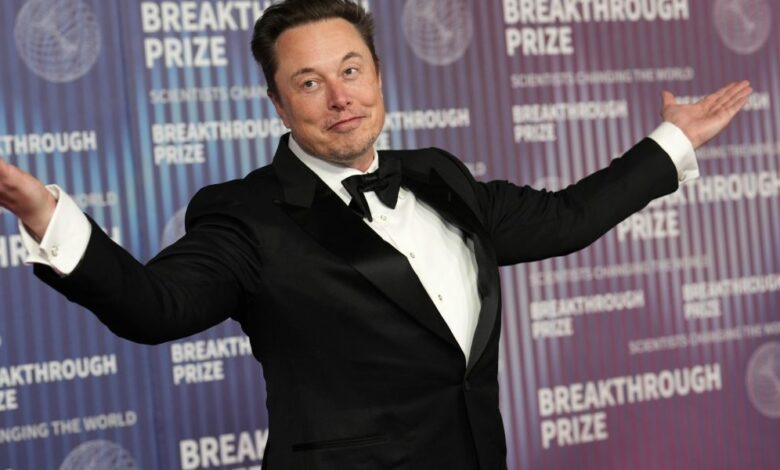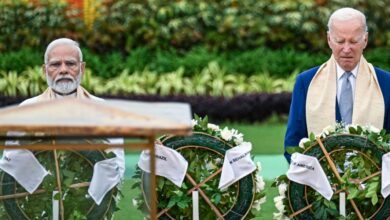Elon Musk slashes price for Tesla’s FSD—the vaunted self-driving tech now costs as much as in 2020


Tesla’s autonomous driving software just successfully completed an unplanned journey—it went back in time, with the cost of the feature now retracing its steps all the way to October 2020.
Over the weekend, while Elon Musk was busy slashing prices on Tesla products across the board, the biggest cut he made was to Full Self-Driving (FSD) software. One third cheaper in the United States than it was just last week, FSD now costs barely more than half what it did at its peak little over a year ago. The new $8,000 price tag also means the software is now officially less expensive than when its vaunted beta first debuted.
Rolled out to a select few three-and-a-half years ago, the highly anticipated beta gave Musk the opportunity to hike the cost of FSD to $10,000. He would continue to urge his loyal customers to buy FSD, since the longer they waited, the more it would cost them.
Now that Tesla FSD beta is out in limited release, FSD price (new or upgrade) will go up by ~$2k on Monday
— Elon Musk (@elonmusk) October 22, 2020
That’s because Musk repeatedly claimed the price would go up the better the software got and the closer FSD came to driving without human supervision, at which point he boasted it would be worth over $100,000. Initially he also kept his word: two subsequent hikes, which culminated in a record increase to $15,000 in 2022, were pushed through despite no substantive progress made.
Then he did something out of the blue last September—he lowered the price of FSD for the first time ever. Unlike his rationale for lowering car prices in 2023, when the cost of inputs like lithium had dropped as goods inflation eased, he could not argue the bill of materials for software had decreased.
The issue was that take-rates had plummeted after customers had broadly given up on his annual promise of a breakthrough next year. He had to resort last month to compulsory trials when new owners picked up their car for the first time. Attempts to license the technology to rival carmakers also collapsed, he admitted in January.
The FSD price will continue to rise as the software gets closer to full self-driving capability with regulatory approval. It that point, the value of FSD is probably somewhere in excess of $100,000.
— Elon Musk (@elonmusk) May 18, 2020
In a way, Musk has given up on FSD as well. In what appears to be an acknowledgement that existing owners will not experience their cars turning into robotaxis overnight—what Musk called Tesla’s “ChatGPT moment”—he opted to simply end the beta test in favor of calling the software “supervised FSD”. This opens up the chance to recognize nearly $926 million in deferred revenue, which could be a major driver of Q1 earnings when the company reports on Tuesday.
Price cuts right before crucial Q1 earnings report
FSD isn’t the only price to go full circle, as Musk slashed prices on several vehicles in a number of major markets. For the U.S., that means the $1,000 increases added to the Model Y price tag first in March and then in April have been undone.
So if prices are continually going down then demand is …. https://t.co/QkIoIckXOM
— 🐶 Earl of FrunkPuppy 🐶 (@28delayslater) April 21, 2024
Three weeks into the quarter and the Model Y is now selling in the industry’s seasonally strong spring months for the same price as it was during the slow, chilly month of February. For Tesla, the loss of revenue is bad news as the crossover accounts for two-thirds of all car sales.
Musk usually argues underlying demand for his core product “might as well be infinite”. He has argued no one would buy a competing $28,675 Toyota RAV 4 if they can buy a Model Y for $29,490—the price Musk now advertises it at.
I think that if you had a monkey throw shit at a keyboard to come up with a pricing strategy for Tesla it would be more coherent than what we’ve seen.
Subscription price will go up once we release FSD. Actually we will cut it. We are raising Model Y prices. Actually now we are…
— Whole Mars Catalog (Supervised) (@WholeMarsBlog) April 21, 2024
But over the weekend he said the quiet part loud. When justifying the price cuts ahead of what is expected to be dreadful Q1 earnings, he admitted not nearly enough people want to buy the Model Y if it costs just $2,000 more.
“Tesla prices must change frequently in order to match production with demand,” wrote Musk, who is asking shareholders to sign off on a record $45 billion pay deal.




